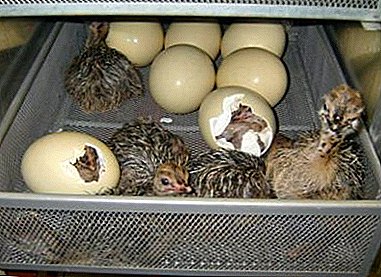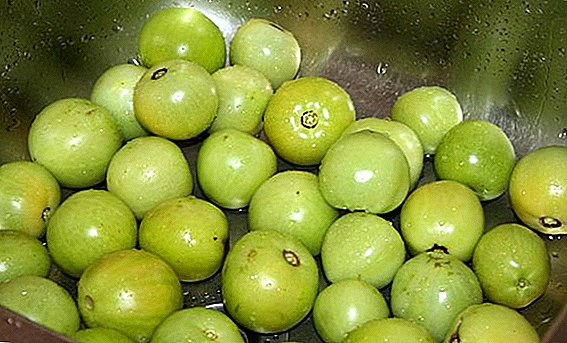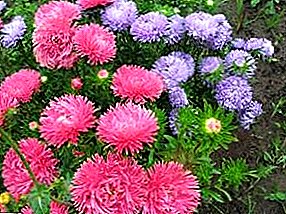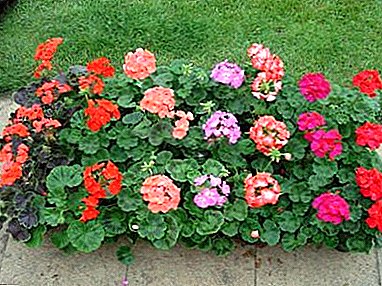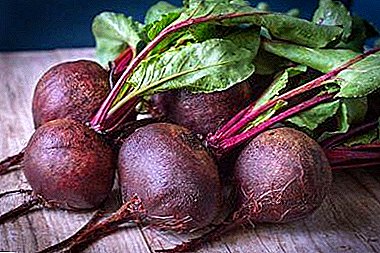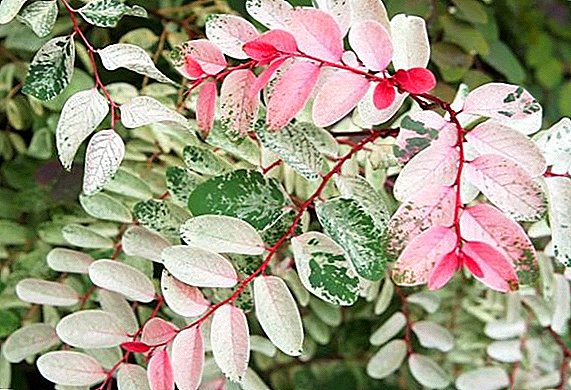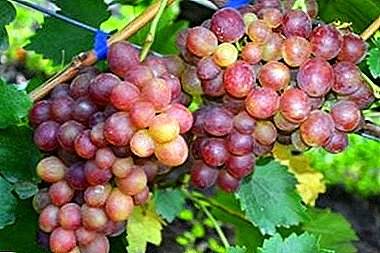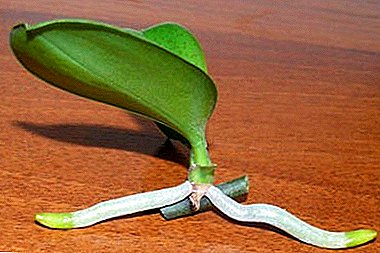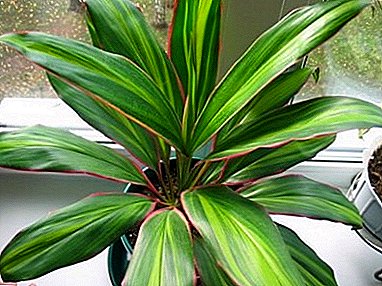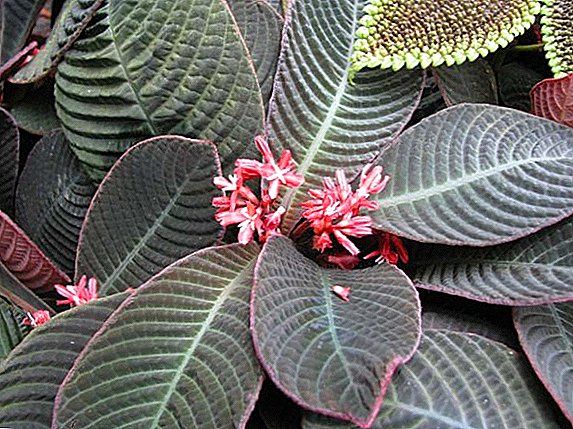 This flower stands out sharply among indoor plants and its infrequent presence in the interiors of dwellings, and fantastic leaf graphics. Details about the beautiful and capricious gofmanii read further in the article.
This flower stands out sharply among indoor plants and its infrequent presence in the interiors of dwellings, and fantastic leaf graphics. Details about the beautiful and capricious gofmanii read further in the article.
Flower description
This indoor plant is grown exclusively for its outstanding leaves, as if specially lined by a talented graphic artist.
Botanical features
This plant, growing in the wild in Central and South America, is named after the German botanist G. Hoffman and has nearly a hundred species. At home, leaves of Gofmania grow up to 0.3 m long and up to 0.08 m wide, have an olive-green or light-green color of the upper leaf surface and a red-purple color of the lower part of the leaves.  The upper surface of the leaves is intricately lined with light veins, and the lower one has a velvety appearance. Some plant species have a basal leafy rosette, while others have an unbranched stem. In the form of pot culture, the plant grows to a maximum of 0.6 m in height.
The upper surface of the leaves is intricately lined with light veins, and the lower one has a velvety appearance. Some plant species have a basal leafy rosette, while others have an unbranched stem. In the form of pot culture, the plant grows to a maximum of 0.6 m in height.
Did you know? The marenov family, to which the gofmania belongs, numbers almost 10 thousand species. Among them are such famous ones as the coffee tree, which gives coffee beans, and the cinchona tree, whose bark is able to effectively fight malaria.
Small star-shaped flowers are colored yellow with red spots, grow out of deciduous sinuses almost on the stem of the plant. They are often completely hidden by foliage and do not represent decorative value.
Kinds
Species of this indoor plant, mainly cultivated at home, are represented by:
- gofmanii radiant also known as gofmaniya otblaskivayuschaya, which in the form of a shrub reaches half a meter in height, has red stems, olive-green above and red below, growing to 0.12 m in length;
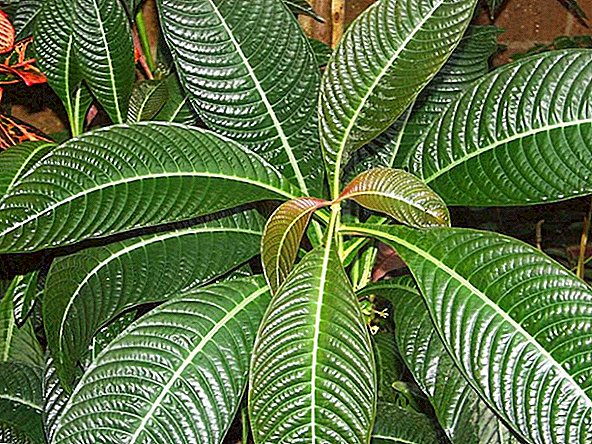
- Hofmanii Retzl (velvet), distinguished by a small (up to 0.3 m) tall bush, long (0.2 m) and wide (0.1 m) velvety leaves of a green-olive color scheme, cast in red-brown shades;
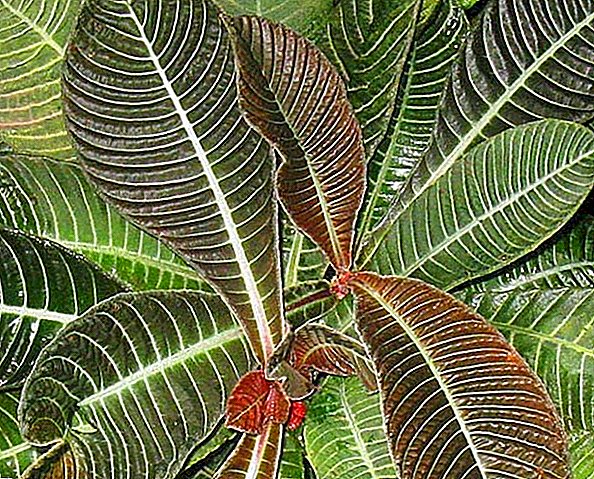
- gofmanii gisbreht, characterized by large velvety leaves of dark green color with a pinkish tinge on the top and radically purple color below, which is grown only in greenhouses.
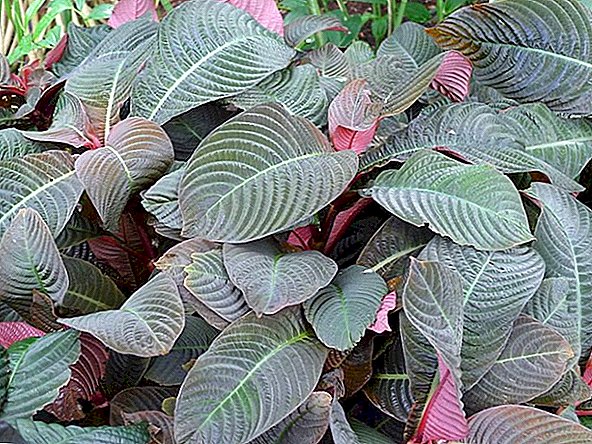
Conditions and care in the house
Gofmaniya is among the most capricious indoor plants, because even the smallest miscalculations during the care of it, especially when watering, are immediately reflected in the decorative qualities of its foliage.
Lighting
Gofmaniya requires highly balanced lighting. On the one hand, being from pritenenny tropical forests, it does not accept direct sunlight, so in the summer it should not be placed on window sills, but rather placed not far from them, where hot sun rays do not reach. But, on the other hand, its shade tolerance has its limits.
Important! Since the dust on the leaves in combination with water becomes almost impossible to remove from the velvety leaves of Gofmania and permanently spoil them, before spraying, you should carefully remove the dust from the leaf surfaces with a soft brush.
The main thing for her is the stability of the lighting throughout the year, so during the period of short daylight the seasonal lack of lighting should be compensated for by moving the plant to the window sill and additional artificial lighting.
Temperature conditions
In summer, the tropical origin of the flower allows it to endure any heat in the presence of high humidity. In winter, warmth for gofmanii is also desirable, since it is a pronounced heat-loving plant.  A drop in temperature below + 18 ° C can cause stress in the flower, which immediately affects the appearance of the plant. Especially dangerous for gofmanii sharp temperature drops, as well as drafts.
A drop in temperature below + 18 ° C can cause stress in the flower, which immediately affects the appearance of the plant. Especially dangerous for gofmanii sharp temperature drops, as well as drafts.
Air humidity
Also very negatively, this flower is related to dry air. Humidity in the room where it grows, should not be below 75%. In this case, any increase in temperature must be accompanied by an increase in the humidity of the surrounding air.
You can increase it with:
- humidifiers;
- placing near the plant fountains or aquarium;
- placing a pot with a flower on wet clay or wet pebbles;
- installation near the pot wide water tanks.
Did you know? Since gofmania is a relative of the coffee and quinine trees, caffeine and quinine are present in appreciable amounts in it, besides other alkaloids.
Spraying a plant with soft water is especially effective. Its temperature should be 5 ° higher than the ambient air temperature. At the same time it is necessary to use only fine-dispersed sprayers.
Watering
Moisture-loving gofmaniya prefers that the substrate in the pot was constantly moderately wet. Moderation is caused by the fact that an excess of moisture is just as dangerous for the sensitive root system of a plant, as is overdrying of soil, therefore in summer the flower is watered three times a week, and in winter the intensity of watering is reduced to 2 times in 7 days.  Water for irrigation should be warm, as when spraying. In no case can not water the flower with tap water without at least its daily sludge. Ideal for irrigation is rainwater.
Water for irrigation should be warm, as when spraying. In no case can not water the flower with tap water without at least its daily sludge. Ideal for irrigation is rainwater.
Top dressing
The need for fertilizer fertilizer gofmaniya experience only during the growing season from May to September. At this time, it is fed every two weeks. Organic fertilizers in the form of mullein, which is applied to the substrate as a solution, are best suited for this plant.
Important! Any fertilizer fertilizer must necessarily be paired with abundant watering.
Due to the increased predisposition of the gentle root system of burners to burns, when using universal mineral-organic fertilizers, it is recommended to take only half of the dose recommended by manufacturers.
Pruning
During the growing season, the gofmania grows rapidly, and then during the rest period, it becomes free from lower foliage in winter, therefore, with the onset of spring, the bare shoots are cut off to preserve the decorative qualities of the bush, after which new shoots begin to actively grow from the sinuses of the remaining short stumps. And to the green mass of the flower as thick as possible, pinch the tops of young shoots.
Transfer
As the young plant grows in the tank and the root system has mastered the entire volume of the substrate, the flower is transplanted. This is usually done every 2 years, and in the intervals it is limited only to the replacement of the upper part of the ground. The process is often timed to the end of winter or early spring. 
It proceeds as follows:
- They select a new container, the diameter of which exceeds the diameter of the previous one by 5 cm.
- The tank is equipped with drainage holes to drain excess fluid.
- A drainage layer of small pebbles, expanded clay or coarse fractional river sand with a minimum height of 2 cm is placed on the bottom.
- Either a subacid, loose fraction of purchased soil is used as a substrate, or a substrate produced independently from equal parts of leafy ground, peat and river sand with a slight addition of compost.
- Transplant the plant by transshipment, trying to keep intact the earthen room and not expose the roots.
- The transplanted gofmania is plentifully watered and put in a shaded place, preferably under a transparent cap.
Breeding
Propagated gofmaniya either by cuttings, or by separation of adult plants.
Division
The simplest method of breeding gofmanii is to separate:
- actively branching with numerous daughter scions of the bush into several parts with 2 or 3 points of growth;
- having taken the roots of the shoots lying on the perimeter of the pot, which are separated from the parent bush and planted in separate containers.
 The capacity of the containers is selected in proportion to the root system of the seedlings. At the bottom of the pots put the drainage layer, on top of which is the substrate, the composition of which was discussed above. Transplanted flowers contain in conditions of high temperature and high humidity until the beginning of their growth, while avoiding bright light.
The capacity of the containers is selected in proportion to the root system of the seedlings. At the bottom of the pots put the drainage layer, on top of which is the substrate, the composition of which was discussed above. Transplanted flowers contain in conditions of high temperature and high humidity until the beginning of their growth, while avoiding bright light.Cuttings
Cutting proceeds as follows:
- They are selected with a length of up to 10 cm with 3 internodes of the shoots remaining after pruning, or broken tops of the shoots.
- Put them in a sand-peat mixture for rooting.
- Cover the seedlings on top with caps of transparent materials.
- Increase ambient air humidity up to 90% and temperature up to + 30 ° С. In this case, the lower heating of the substrate is desirable.
- Put seedlings in partial shade.
- During rooting, regularly moisten the soil and air the saplings under the caps.
- When the first leaves on saplings appear, 2-3 of them are transplanted to a permanent place in large containers.
- The containers are placed in a lighted place, while avoiding direct sunlight.

Possible problems
Hofmania is practically not prone to infectious diseases, but it is very sensitive to agrotechnical blemishes during its care.
This is manifested in:
- wilting bush, which provoke a lack of moisture or low temperature;
- loss of leafy turgor leading to the withering of the whole bush and the resulting due to excessive watering;
- decay of the root system and stems, which is also caused by excessive watering and stagnation of water in the pan, with which proper irrigation and the use of fungicides should be combated;
- drying of hardwood tips, caused by low humidity in the room and insufficient watering.
You will be interested to know how to feed indoor flowers.
With improper care, leading to the weakening of the plant, it can become the object of attack by pests in the form of:
- spider mite, which is most active in a dry atmosphere and which, except for increasing the humidity in the room, should be controlled with insecticides like "Aktara" or "Aktellika";
- aphids;
- thrips;
- shields, which should also be controlled with the help of air humidification and the use of insecticides, as is the case with the spider mite.
The magnificence of the foliage of Gofmania is combined with the capriciousness of the plant in relation to the growing conditions and the quality of its care. However, the uniqueness of the appearance of the flower fully pays for all the efforts made to grow it.





